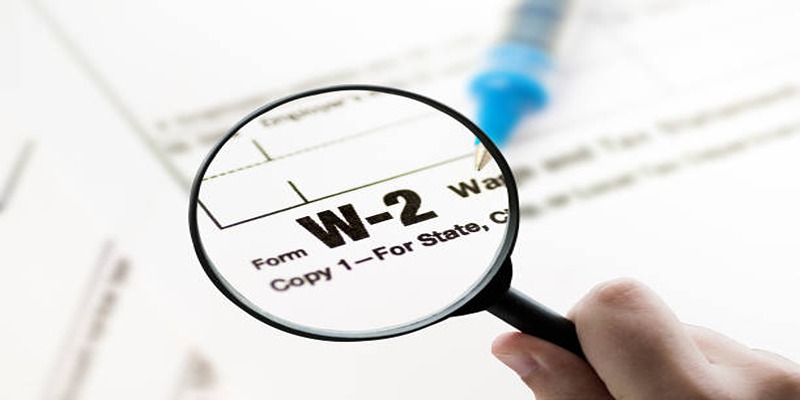Filing taxes might not be the most exciting task on your to-do list. However, when it comes to understanding your W-2 form, getting it right is crucial. Whether you're an employee eager to file your taxes or simply trying to make sense of this essential document, the W-2 form is central to tax filing in the United States. This guide will break down everything you need to know about the W-2 form. We’ll cover what it is, why it’s important, how to file it, and everything in between.
What Is a W-2 Form?

W-2 form or the Wage and Tax Statement is a significant tax document that employers annually give to employees and the IRS. It also lists your total earnings, wages and salary you earned in the year and the federal, state and other taxes that were taken out of your paychecks during the year.
If you’ve earned at least $600 from an employer during the year, you should receive a W-2 form for that job. It’s required for filing your annual taxes and is a critical piece of information the IRS uses to verify your earnings and tax payments.
Key details included on a W-2 form:
- Wages, Tips, and Other Compensation - Your total earnings for the year.
- Federal Income Tax Withheld - The amount of tax your employer withheld from your paycheck for federal taxes.
- Social Security and Medicare Withheld - Contributions to Social Security and Medicare programs, which are mandatory.
- State and Local Taxes Withheld - Taxes paid to your state or local government, if applicable.
The accuracy of your W-2 form is crucial, as it directly impacts whether you owe additional taxes or qualify for a refund. Ensuring its correctness can save you from costly mistakes and unnecessary stress.
Why Is the W-2 Form Important?
Filing your annual tax return accurately is nearly impossible without a W-2 form. This essential document provides crucial details about your income and withholdings, ensuring your tax return is correct and compliant with regulations.
- Compliance With Federal Law: The IRS requires taxpayers to report their income on their annual tax return. The W-2 form serves as an official document that summarizes your earnings and tax withholdings.
- Tax Refund Claims: The W-2 helps you determine whether you’ve overpaid taxes throughout the year. If you have, you’re eligible for a tax refund. Conversely, it helps estimate if additional taxes are owed.
- Proof of Earnings: The W-2 is often required when applying for loans, renting an apartment, or proving income for legal or financial purposes.
Filing taxes without accurate W-2 information can result in errors on your tax return, costly IRS penalties, or delays in receiving your refund. Ensure your information is correct to avoid these unnecessary setbacks.
How to File Taxes Using a W-2 Form
Filing taxes with a W-2 may seem daunting at first, but breaking it down step-by-step makes the process straightforward and manageable, ensuring you handle your tax obligations with confidence and ease.
Step 1: Gather Necessary Documents
Before beginning your tax filing, gather all necessary documents to ensure a smooth process. Having everything ready in advance, such as income statements, receipts, and deductions, will save you time and prevent unnecessary delays.
- Your W-2 form(s) from all employers.
- Any additional tax documentation, such as a 1099 (if you freelanced or worked as an independent contractor).
- Your Social Security Number (SSN) or Individual Taxpayer Identification Number (ITIN).
Step 2: Review Your W-2 Form
Check the W-2 form for:
- Accuracy: Verify your name, address, and Social Security number are correct.
- Wage Information: Confirm that the total earnings match what you were paid throughout the year.
- Tax Withholdings: Double-check the federal, state, and local withholdings to ensure they appear accurate.
Step 3: File Electronically or By Paper
E-filing has become the fastest, easiest, and most reliable way to submit your tax return. Save time and ensure accuracy by filing electronically—it's the preferred method for taxpayers and the IRS alike.
- Use tax software such as TurboTax or H&R Block, which will guide you through entering data from your W-2.
- Follow prompts in the software to double-check numbers and calculate your refund or amount due.
- Alternatively, fill out Form 1040 manually with information from your W-2, then mail it to the IRS.
Step 4: Submit Your Tax Return
Submit your completed return electronically through the software or mail the printed form with attached W-2s and supporting documents. Always keep a copy of your W-2 and supporting documents for your records.
Tips for Managing and Using Your W-2

- Don’t Wait to Receive Your W-2: Employers are required to send out W-2 forms by January 31 each year. If you don’t receive yours by mid-February, contact your employer directly.
- File Your Taxes Early: Filing early not only helps you avoid last-minute stress but also reduces your chances of falling victim to tax scams.
- Use W-2 Information Responsibly: Beyond taxes, your W-2 can be used to verify your income for various applications, such as securing loans or housing. Store it in a safe location after filing your taxes.
- Know What to Do If You Lose Your W-2: If you lose your W-2, contact your employer or HR department for a replacement. Alternatively, you can request a copy from the IRS, though this may take additional time.
Final Thoughts
Understanding and correctly using your W-2 form is a key step in managing your financial health. Whether you’re a seasoned taxpayer or filing for the first time, following the steps outlined here will help simplify the process and ensure compliance. Remember, staying proactive and organized with documents like your W-2 can save you not only time but also money in the form of refunds or avoided penalties.












